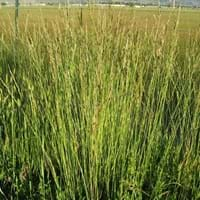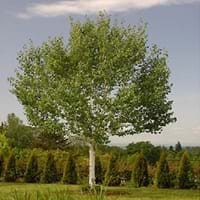Life Span
Perennial
Perennial
Origin
Hybrid origin
India, Nepal, China
Types
Alta fescue, Kentucky fescue
Not Available
Number of Varieties
Not Available
Habitat
meadows, Well Drained, yards
Mountains
USDA Hardiness Zone
5-8
5-7
Sunset Zone
A1, A2, A3, 1a, 1b, 2a, 2b, 3a, 3b, 4, 5, 6, 7, 8, 9, 10, 14, 15, 16, 17, 18, 19, 20, 21, 22, 23, 24
3a, 3b, 4, 5, 6, 7, 8, 9, 10, 11, 14, 15, 16, 17
Habit
Clump-Forming
Pyramidal
Minimum Width
Not Available
Flower Color
Pale White
Tan, Brown
Flower Color Modifier
Bicolor
Bicolor
Fruit Color
Non Fruiting Plant
Not Available
Leaf Color in Spring
Blue Green
Yellow green
Leaf Color in Summer
Light Green
Dark Green
Leaf Color in Fall
Blue Green
Yellow
Leaf Color in Winter
Green, Tan
Not Available
Leaf Shape
Grass like
Cordiform
Plant Season
Spring, Fall
Spring, Summer, Fall, Winter
Sunlight
Full Sun, Partial Sun
Full Sun, Partial Sun
Type of Soil
Clay, Loam
Loam, Sand
The pH of Soil
Neutral, Alkaline
Acidic, Neutral
Soil Drainage
Average
Average
Bloom Time
Not Available
Early Spring
Tolerances
Not Available
Not Available
Where to Plant?
Ground
Ground
How to Plant?
Seedlings, vegetative cuttings
Grafting, Stem Cutting
Plant Maintenance
Medium
Medium
Watering Requirements
Allow to dry out slightly between watering, Never Over-water
Requires watering in the growing season
In Summer
Lots of watering
Average Water
In Spring
Moderate
Moderate
In Winter
Average Water
Average Water
Soil pH
Neutral, Alkaline
Acidic, Neutral
Soil Type
Clay, Loam
Loam, Sand
Soil Drainage Capacity
Average
Average
Sun Exposure
Full Sun, Partial Sun
Full Sun, Partial Sun
Pruning
Prune after flowering, Prune for size control, Remove dead or diseased plant parts
Remove damaged leaves, Remove dead branches, Remove dead leaves
Fertilizers
All-Purpose Liquid Fertilizer
Fertilize in early spring, Fertilize in late fall, slow-release fertilizers
Pests and Diseases
Brown patch, Gray leaf blight, Pythium blight, Rust, Zoysia patch
Honey fungus, Leaves with brown tip, Phytophthora Root Rot, Powdery mildew, Verticillium Wilt
Plant Tolerance
Full Sun, Heat And Humidity
Dry Conditions, waterlogging, Wet Site
Flowers
Insignificant
Insignificant
Flower Petal Number
Single
Not Available
Foliage Texture
Medium
Medium
Foliage Sheen
Matte
Matte
Attracts
Mealybugs, Mites
Not Available
Allergy
Skin rash, Vomiting, Watery eyes
Not Available
Aesthetic Uses
Ground Cover, Used in parkland
Not Used For Aesthetic Purpose
Beauty Benefits
Not Available
Weightloss
Environmental Uses
Fixes Nitrogen, Prevent Soil Erosion
Air purification
Medicinal Uses
Antispasmodic
anti-cancer, anti-inflammatory, antimicrobial, Antioxidants, Antiseptic, Carminative
Part of Plant Used
Whole plant
Bark, Leaves
Other Uses
Animal Feed, Used as Ornamental plant
Used in construction, Wood is used in construction
Used As Indoor Plant
No
No
Used As Outdoor Plant
Yes
Yes
Garden Design
Groundcover, Lawns and Turf
Feature Plant, Shade Trees
Botanical Name
Festuca arundinacea
BETULA utilis
Common Name
Tall Fescue
Himalayan Birch
In Hindi
tall fescue
हिमालय सन्टी
In German
Rohr-Schwingel
Himalaya-Birke
In French
Festuca arundinacea
bouleau de l'Himalaya
In Spanish
Festuca arundinacea
abedul del Himalaya
In Greek
tall fescue
Himalayan σημύδας
In Portuguese
Festuca arundinacea
bétula Himalaia
In Polish
Kostrzewa trzcinowa
Himalayan brzoza
In Latin
tall fescue
Birch Himalayan
Phylum
Magnoliophyta
Tracheophyta
Class
Liliopsida
Magnoliopsida
Family
Poaceae
Betulaceae
Clade
Angiosperms, Commelinids, Monocots
Angiosperms, Eudicots, Rosids
Tribe
Not Available
Not Available
Subfamily
Not Available
Not Available
Number of Species
Not Available
Not Available
Importance of Tall Fescue and Himalayan Birch
Want to have the most appropriate plant for your garden? You might want to know the importance of Tall Fescue and Himalayan Birch. Basically, these two plants vary in many aspects. Compare Tall Fescue and Himalayan Birch as they differ in many characteristics such as their life, care, benefits, facts, etc. Every gardener must at least have the slightest clue about the plants he wants to plant in his garden. Compare their benefits, which differ in many ways like facts and uses. The medicinal use of Tall Fescue is Antispasmodic whereas of Himalayan Birch is anti-cancer, anti-inflammatory, antimicrobial, Antioxidants, Antiseptic and Carminative. Tall Fescue has beauty benefits as follows: Not Available while Himalayan Birch has beauty benefits as follows: Not Available.
Compare Facts of Tall Fescue vs Himalayan Birch
How to choose the best garden plant for your garden depending upon its facts? Here garden plant comparison will help you to solve this query. Compare the facts of Tall Fescue vs Himalayan Birch and know which one to choose. As garden plants have benefits and other uses, allergy is also a major drawback of plants for some people. Allergic reactions of Tall Fescue are Skin rash, Vomiting and Watery eyes whereas of Himalayan Birch have Not Available respectively. Having a fruit bearing plant in your garden can be a plus point of your garden. Tall Fescue has no showy fruits and Himalayan Birch has no showy fruits. Also Tall Fescue is not flowering and Himalayan Birch is not flowering . You can compare Tall Fescue and Himalayan Birch facts and facts of other plants too.





